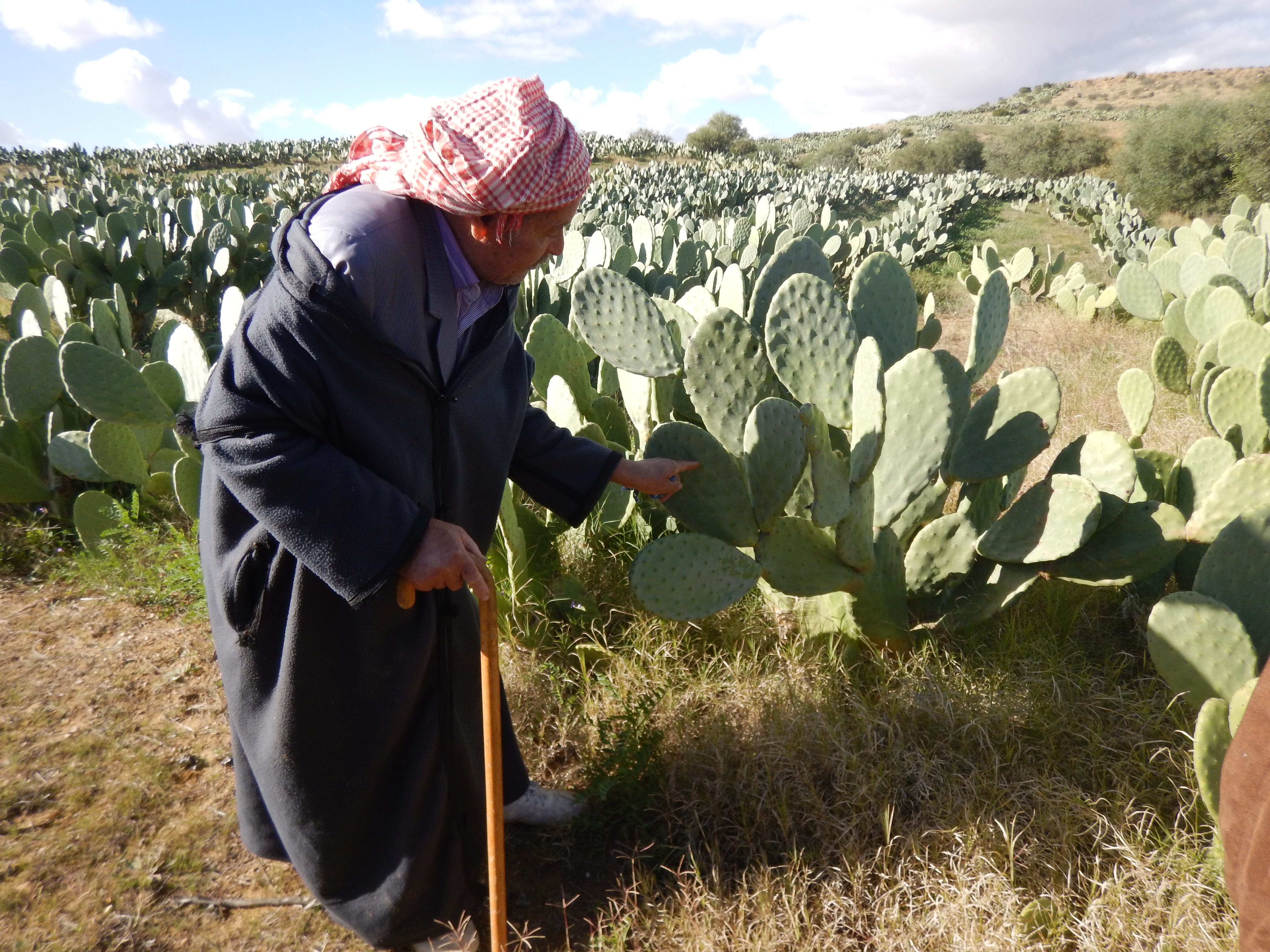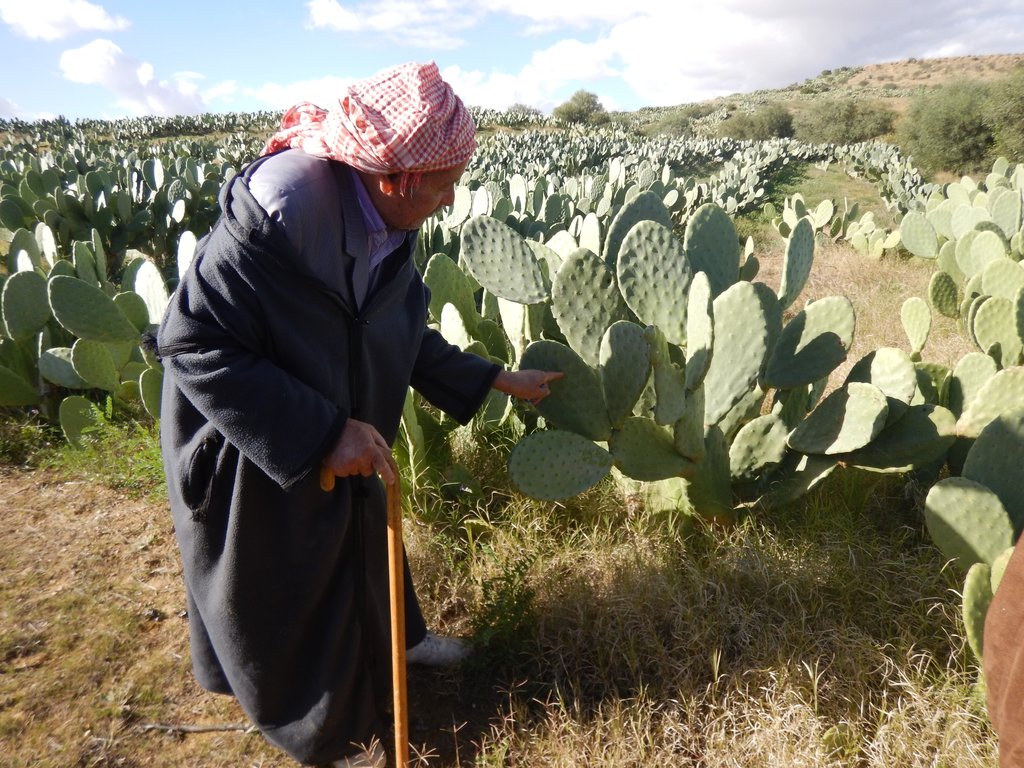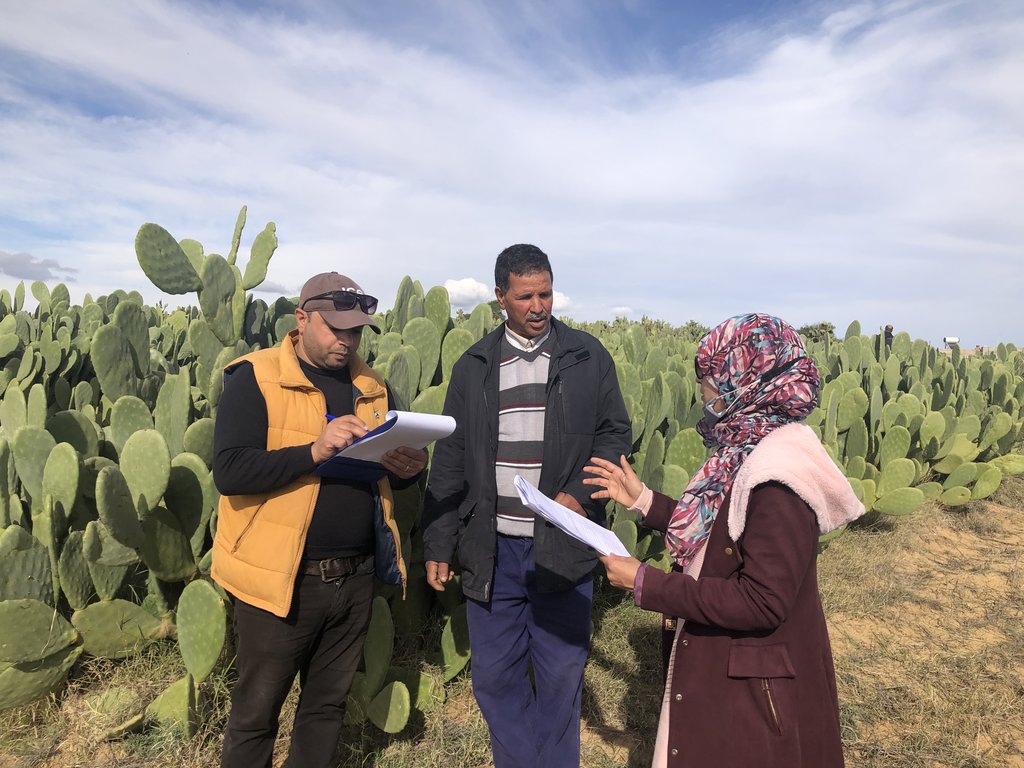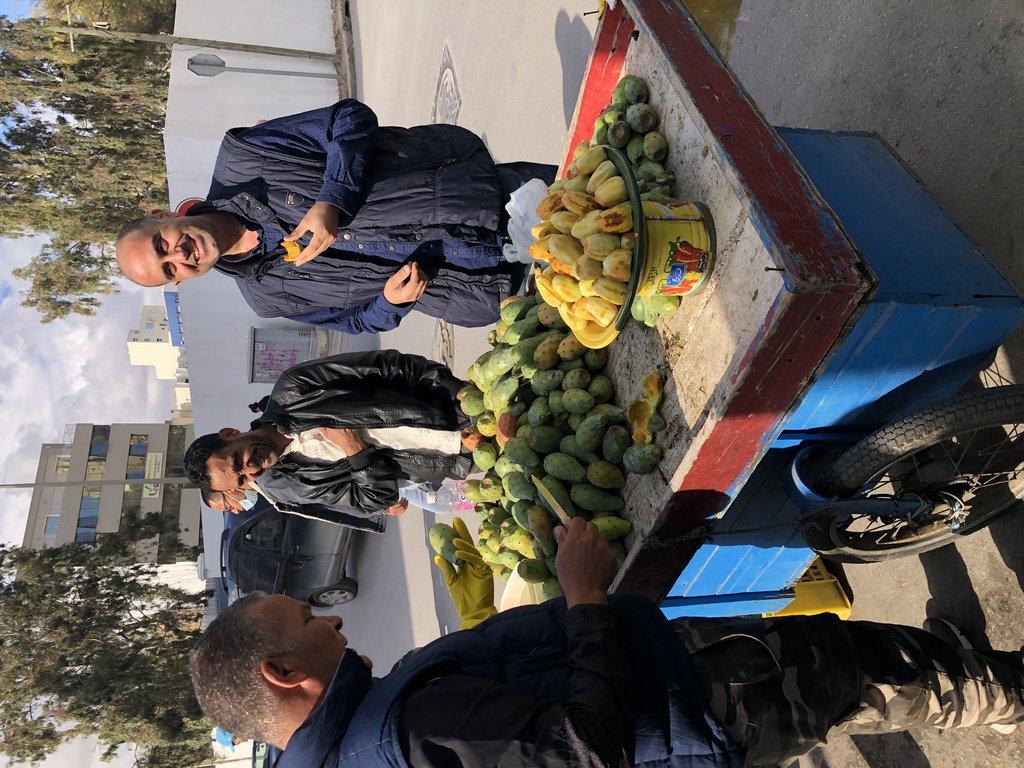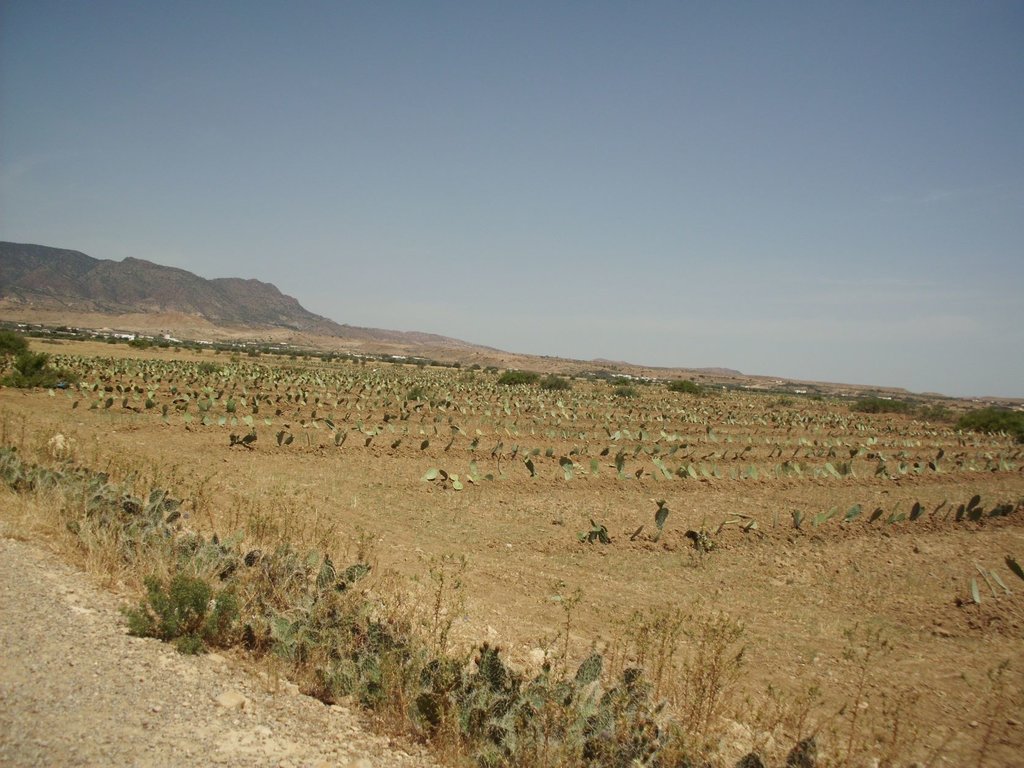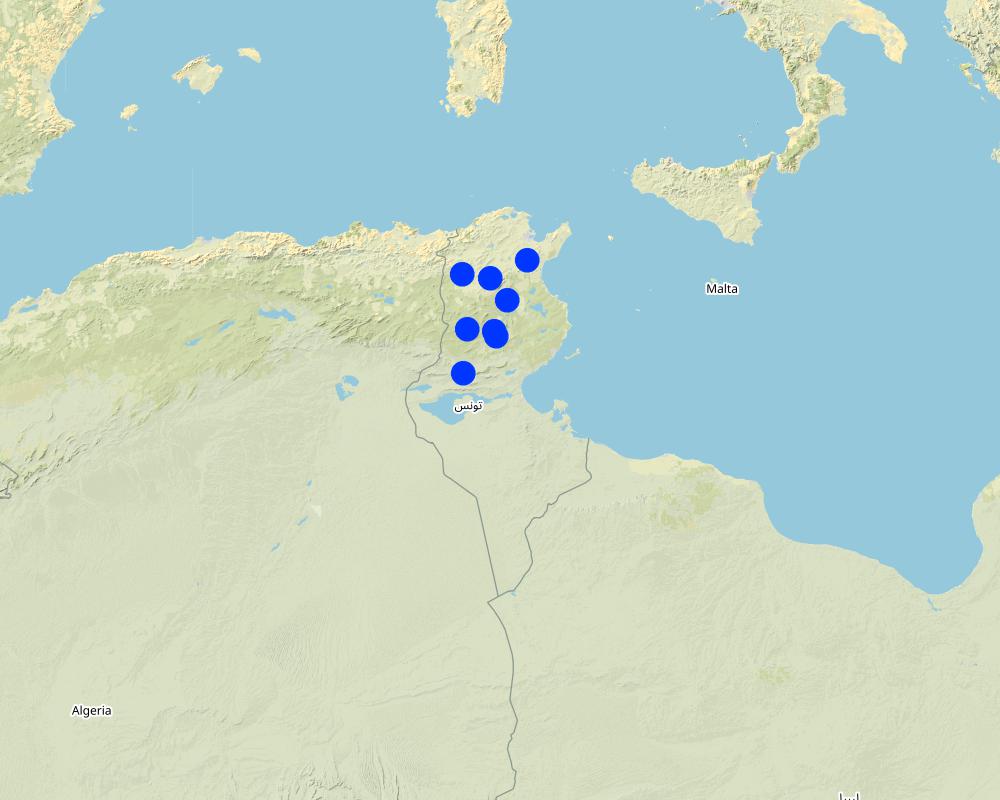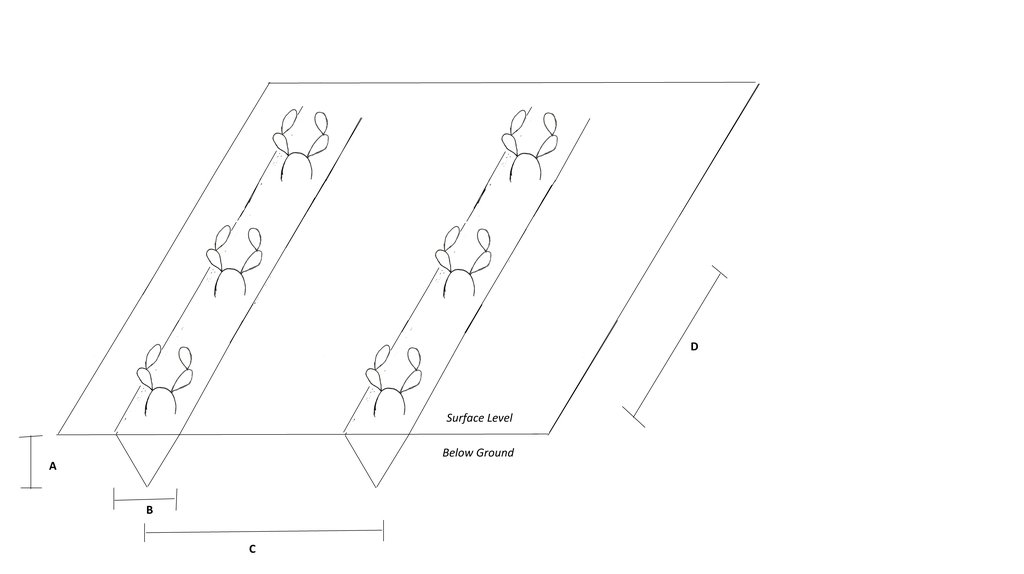Cactus Cultivation [Tunisia]
- Creation:
- Update:
- Compiler: Joren Verbist
- Editor: –
- Reviewers: William Critchley, Rima Mekdaschi Studer
technologies_5994 - Tunisia
View sections
Expand all Collapse all1. General information
1.2 Contact details of resource persons and institutions involved in the assessment and documentation of the Technology
Key resource person(s)
Research Team Leader of Rangeland Ecology and Forages:
Louhaichi Mounir
International Center of Agriculture Research in the Dry Areas (ICARDA)
Tunisia
Associate Professor:
Slim Slim
School of Higher Education in Agriculture of Mateur
Tunisia
Name of project which facilitated the documentation/ evaluation of the Technology (if relevant)
ICARDA Institutional Knowledge Management InitiativeName of the institution(s) which facilitated the documentation/ evaluation of the Technology (if relevant)
International Center for Agricultural Research in the Dry Areas (ICARDA) - Lebanon1.3 Conditions regarding the use of data documented through WOCAT
The compiler and key resource person(s) accept the conditions regarding the use of data documented through WOCAT:
Yes
1.4 Declaration on sustainability of the described Technology
Is the Technology described here problematic with regard to land degradation, so that it cannot be declared a sustainable land management technology?
No
Comments:
While Opuntia can be an invasive in North Africa, assurances have been given by ICARDA that this is a non-invasive species.
2. Description of the SLM Technology
2.1 Short description of the Technology
Definition of the Technology:
This technology is based on the natural advantages and the multi-purpose usage of spineless cactus pear (Opuntia fiscus-indica), to cultivate marginal lands in central Tunisia, generating environmental and socio-economic benefits.
2.2 Detailed description of the Technology
Description:
The central areas of Tunisia are semi-arid and receive less than 500 millimeters of annual rainfall . Most of these lands are considered marginal as result of land degradation. Marginal lands are often used as (unproductive) grazing land for livestock. To revitalize these areas and to benefit the local population, the International Centre of Agricultural Research in Dry Areas (ICARDA) and its national partners have investigated the potential of cactus as a crop (e.g. Opuntia fiscus-indica).
Spineless cactus was already introduced in Tunisia during the sixteenth and seventeenth centuries, but beginning in 1920-1930 cultivation for fodder production has gradually evolved. Opuntia is known for its invasive character, but the particular species being promoted - Opuntia fiscus-indica - is non-invasive. The crop is well suited for the Tunisian context because the cacti can cope with high temperatures and grow well in (semi)-arid areas with limited rainfall. Additionally, the plant is very resilient as it can withstand a long dry season due to its high water- content and water-use -efficiency, which are a result of its morphology (waxy cuticle, no actual leaves) and its Crassulacean Acid Metabolism (CAM). In a CAM plant, stomata in the leaves remain shut during the day to reduce evapotranspiration, but open at night to collect and fix carbon dioxide (CO2). In general, cacti have multiple products that benefit local livelihoods. These are, for example, stable production of fodder for livestock and fruits for human consumption. Also, cactus can grow and produce requiring few inputs such as fertilizers, therefore marginal lands are well suited for cultivation. The main current risk for cactus cultivation is the risk of cochineal, an insect pest.
To establish a cactus plantation, the surface is ploughed to loosen up the often crusted soil. Then furrows are constructed in which the cacti pads are planted. Simultaneously, the furrows are partly filled with manure. The depth and widths of the furrows are 30 centimetres. The spacing between plants within the row is 50 centimeters and the distance between rows is 5 meters.
A cactus plantation needs weeding. Weeding is mechanically done by a plough in March to May. Harvesting of fruit is manually done by fruit-pickers in August to September. Cacti can also be harvested for their pads, which can be fed to livestock or used for outplanting. It is excellent fodder as it has a high nutritional value and high water-content. On average, a farmer following these agronomic practices generates an income of 800 USD per hectare.
To conclude, this documentation shows that the implementation of cacti is socio-economically and environmentally appropriate to cultivate marginal lands as cacti uses water and nutrients highly efficient while reducing land degradation. Therefore, the out-scaling of cacti is very valuable and a practical option to fight land degradation and enhance smallholder’s income.
2.3 Photos of the Technology
2.5 Country/ region/ locations where the Technology has been applied and which are covered by this assessment
Country:
Tunisia
Region/ State/ Province:
Central Tunisia
Further specification of location:
Kairouan, Zaghouan, Siliana, Kef, Sidi Bouzid, Kasserine and Gafsa
Specify the spread of the Technology:
- evenly spread over an area
If precise area is not known, indicate approximate area covered:
- 1-10 km2
Is/are the technology site(s) located in a permanently protected area?
No
Comments:
This documentation is a example of how cacti are cultivated in Tunisia, which is done on many (>100) farms.
The pin-points represent the provinces in which cactus are cultivated
Map
×2.6 Date of implementation
If precise year is not known, indicate approximate date:
- 10-50 years ago
2.7 Introduction of the Technology
Specify how the Technology was introduced:
- during experiments/ research
- through projects/ external interventions
3. Classification of the SLM Technology
3.1 Main purpose(s) of the Technology
- improve production
- reduce risk of disasters
- adapt to climate change/ extremes and its impacts
- create beneficial economic impact
- create beneficial social impact
3.2 Current land use type(s) where the Technology is applied
Land use mixed within the same land unit:
No

Cropland
- Tree and shrub cropping
Tree and shrub cropping - Specify crops:
- cactus, cactus-like (e.g. opuntia)
Number of growing seasons per year:
- 1
Is intercropping practiced?
No
Is crop rotation practiced?
No

Grazing land
Intensive grazing/ fodder production:
- Cut-and-carry/ zero grazing
Animal type:
- goats
- sheep
3.3 Has land use changed due to the implementation of the Technology?
Has land use changed due to the implementation of the Technology?
- Yes (Please fill out the questions below with regard to the land use before implementation of the Technology)

Grazing land
Extensive grazing:
- Semi-nomadic pastoralism
Comments:
Before cactus cultivation, the land was marginal and only lightly used by pastoralists due to the very poor production.
3.4 Water supply
Water supply for the land on which the Technology is applied:
- rainfed
3.5 SLM group to which the Technology belongs
- improved ground/ vegetation cover
- improved plant varieties/ animal breeds
3.6 SLM measures comprising the Technology

agronomic measures
- A1: Vegetation/ soil cover
- A3: Soil surface treatment

management measures
- M1: Change of land use type
3.7 Main types of land degradation addressed by the Technology

soil erosion by water
- Wt: loss of topsoil/ surface erosion
- Wg: gully erosion/ gullying

soil erosion by wind
- Et: loss of topsoil

physical soil deterioration
- Pk: slaking and crusting

biological degradation
- Bc: reduction of vegetation cover
3.8 Prevention, reduction, or restoration of land degradation
Specify the goal of the Technology with regard to land degradation:
- prevent land degradation
- reduce land degradation
4. Technical specifications, implementation activities, inputs, and costs
4.1 Technical drawing of the Technology
Technical specifications (related to technical drawing):
A = Depth Furrow = 30 centimeter
B = Width Furrow = 30 centimeter
C = Spacing between rows = 5 meter
D = Spacing between plants = 0.5 meter
Author:
Joren Verbist
Date:
27/11/2021
4.2 General information regarding the calculation of inputs and costs
Specify how costs and inputs were calculated:
- per Technology area
Indicate size and area unit:
1 Hectare
Specify currency used for cost calculations:
- USD
4.3 Establishment activities
| Activity | Timing (season) | |
|---|---|---|
| 1. | Surface Soil Ploughing | Prior to Furrow Digging |
| 2. | Digging Furrows | Prior to Planting |
| 3. | Planting the Cacti | Spring to Autumn (During Planting) |
| 4. | Fertilizer Application | Spring to Autumn (During Planting) |
4.4 Costs and inputs needed for establishment
| Specify input | Unit | Quantity | Costs per Unit | Total costs per input | % of costs borne by land users | |
|---|---|---|---|---|---|---|
| Labour | Planting & Fertilizer Application | Person-Hours | 91.5 | 0.875 | 80.06 | 100.0 |
| Equipment | Furrow Digging | Machine-Hours | 1.0 | 10.0 | 10.0 | 100.0 |
| Equipment | Surface Soil Ploughing | Machine-Hours | 2.0 | 10.0 | 20.0 | 100.0 |
| Plant material | Cactus Pads | Pads | 4000.0 | 0.045 | 180.0 | 100.0 |
| Fertilizers and biocides | Fertilizer | Ton | 1.0 | 110.0 | 110.0 | 100.0 |
| Total costs for establishment of the Technology | 400.06 | |||||
| Total costs for establishment of the Technology in USD | 400.06 | |||||
4.5 Maintenance/ recurrent activities
| Activity | Timing/ frequency | |
|---|---|---|
| 1. | Mechanical Weeding | March-May |
| 2. | Harvesting | August-September |
4.6 Costs and inputs needed for maintenance/ recurrent activities (per year)
| Specify input | Unit | Quantity | Costs per Unit | Total costs per input | % of costs borne by land users | |
|---|---|---|---|---|---|---|
| Labour | Harvesting | Person-Hours | 40.0 | 0.875 | 35.0 | 100.0 |
| Equipment | Weeding | Machine-Hours | 1.0 | 10.0 | 10.0 | 100.0 |
| Total costs for maintenance of the Technology | 45.0 | |||||
| Total costs for maintenance of the Technology in USD | 45.0 | |||||
5. Natural and human environment
5.1 Climate
Annual rainfall
- < 250 mm
- 251-500 mm
- 501-750 mm
- 751-1,000 mm
- 1,001-1,500 mm
- 1,501-2,000 mm
- 2,001-3,000 mm
- 3,001-4,000 mm
- > 4,000 mm
Agro-climatic zone
- semi-arid
- arid
5.2 Topography
Slopes on average:
- flat (0-2%)
- gentle (3-5%)
- moderate (6-10%)
- rolling (11-15%)
- hilly (16-30%)
- steep (31-60%)
- very steep (>60%)
Landforms:
- plateau/plains
- ridges
- mountain slopes
- hill slopes
- footslopes
- valley floors
Altitudinal zone:
- 0-100 m a.s.l.
- 101-500 m a.s.l.
- 501-1,000 m a.s.l.
- 1,001-1,500 m a.s.l.
- 1,501-2,000 m a.s.l.
- 2,001-2,500 m a.s.l.
- 2,501-3,000 m a.s.l.
- 3,001-4,000 m a.s.l.
- > 4,000 m a.s.l.
Indicate if the Technology is specifically applied in:
- not relevant
5.3 Soils
Soil depth on average:
- very shallow (0-20 cm)
- shallow (21-50 cm)
- moderately deep (51-80 cm)
- deep (81-120 cm)
- very deep (> 120 cm)
Soil texture (topsoil):
- coarse/ light (sandy)
Soil texture (> 20 cm below surface):
- coarse/ light (sandy)
Topsoil organic matter:
- medium (1-3%)
- low (<1%)
5.4 Water availability and quality
Ground water table:
5-50 m
Availability of surface water:
poor/ none
Water quality (untreated):
for agricultural use only (irrigation)
Water quality refers to:
ground water
Is water salinity a problem?
Yes
Is flooding of the area occurring?
No
5.5 Biodiversity
Species diversity:
- low
Habitat diversity:
- low
5.6 Characteristics of land users applying the Technology
Sedentary or nomadic:
- Sedentary
Market orientation of production system:
- mixed (subsistence/ commercial)
Relative level of wealth:
- very poor
- poor
Individuals or groups:
- individual/ household
Level of mechanization:
- manual work
- mechanized/ motorized
Gender:
- women
- men
Age of land users:
- youth
- middle-aged
- elderly
5.7 Average area of land used by land users applying the Technology
- < 0.5 ha
- 0.5-1 ha
- 1-2 ha
- 2-5 ha
- 5-15 ha
- 15-50 ha
- 50-100 ha
- 100-500 ha
- 500-1,000 ha
- 1,000-10,000 ha
- > 10,000 ha
Is this considered small-, medium- or large-scale (referring to local context)?
- small-scale
5.8 Land ownership, land use rights, and water use rights
Land ownership:
- individual, not titled
- individual, titled
Land use rights:
- individual
Water use rights:
- communal (organized)
Are land use rights based on a traditional legal system?
Yes
5.9 Access to services and infrastructure
health:
- poor
- moderate
- good
education:
- poor
- moderate
- good
technical assistance:
- poor
- moderate
- good
employment (e.g. off-farm):
- poor
- moderate
- good
markets:
- poor
- moderate
- good
energy:
- poor
- moderate
- good
roads and transport:
- poor
- moderate
- good
drinking water and sanitation:
- poor
- moderate
- good
financial services:
- poor
- moderate
- good
6. Impacts and concluding statements
6.1 On-site impacts the Technology has shown
Socio-economic impacts
Production
crop production
crop quality
fodder production
fodder quality
risk of production failure
production area
Socio-cultural impacts
food security/ self-sufficiency
Ecological impacts
Soil
soil cover
soil loss
soil accumulation
soil crusting/ sealing
soil organic matter/ below ground C
Biodiversity: vegetation, animals
Vegetation cover
Climate and disaster risk reduction
drought impacts
6.3 Exposure and sensitivity of the Technology to gradual climate change and climate-related extremes/ disasters (as perceived by land users)
Climate-related extremes (disasters)
Meteorological disasters
| How does the Technology cope with it? | |
|---|---|
| local hailstorm | not well |
| local snowstorm | not well |
Climatological disasters
| How does the Technology cope with it? | |
|---|---|
| heatwave | very well |
| drought | very well |
Biological disasters
| How does the Technology cope with it? | |
|---|---|
| epidemic diseases | not well |
6.4 Cost-benefit analysis
How do the benefits compare with the establishment costs (from land users’ perspective)?
Short-term returns:
slightly negative
Long-term returns:
positive
How do the benefits compare with the maintenance/ recurrent costs (from land users' perspective)?
Short-term returns:
very positive
Long-term returns:
very positive
6.5 Adoption of the Technology
- > 50%
Of all those who have adopted the Technology, how many did so spontaneously, i.e. without receiving any material incentives/ payments?
- 51-90%
6.6 Adaptation
Has the Technology been modified recently to adapt to changing conditions?
No
6.7 Strengths/ advantages/ opportunities of the Technology
| Strengths/ advantages/ opportunities in the land user’s view |
|---|
| The cacti are highly productive with minimum inputs. |
| It does not require much water |
| The cacti are even productive in poor soil and by growing cacti on these soils, it also reduces erosion. |
| The reduced risk of drought deteriorated yields is important as climate change leads to more extreme weather event, such as droughts. This will only increase in the future. Therefore the cactus's ability to cope with climate change (resilience to climate fluctuations) is a great advantage and increasingly important. |
| Strengths/ advantages/ opportunities in the compiler’s or other key resource person’s view |
|---|
| Due to the suitability of cacti on marginal lands, the soil is partly covered permanently by vegetation in these areas which protects these degraded lands. Therefore, cacti cultivation could offer incentive to prevent land degradation. |
| The technology offers increased resilience of the environment and its involved livelihoods. This is because cacti are more resilient to climate change induced effects such as increased droughts and increasing (summer) temperatures, as result of their high-water content and efficiency. Therefore, this technology is better suited for the future. |
6.8 Weaknesses/ disadvantages/ risks of the Technology and ways of overcoming them
| Weaknesses/ disadvantages/ risks in the land user’s view | How can they be overcome? |
|---|---|
| The significant cost related to labour. | |
| The increased risk of new pests. | More awareness is required so the new pests can be identified, allowing proper and timely action. |
| Weaknesses/ disadvantages/ risks in the compiler’s or other key resource person’s view | How can they be overcome? |
|---|---|
| The possible knowledge gap for farmers to switch from their conventional/traditional agricultural practices to a more innovative one could be a bottleneck for out-scaling the technology. | This bottleneck can be overcome, by developing social capital such as (e.g.) institutions or farmers networks to disseminate knowledge. A good example is the field days for farmers organized ICARDA. |
| The risks of pests and diseases is a weakness of the cacti as these plants are vulnerable to this. Also, due to the density and mono-cropping of the cacti, the pest/ disease may spread easily and rapidly over the field. Eventually, risking the production of the cacti, thus possibly reducing the income of local farmers. | A solution may be found in changing the agricultural activities. An example of such a possible solution is the introduction of intercropping, this could increase bio-diversity and reduce the potential loss of income in case of a pest-outbreak. |
7. References and links
7.1 Methods/ sources of information
- interviews with SLM specialists/ experts
- compilation from reports and other existing documentation
When were the data compiled (in the field)?
2021
7.2 References to available publications
Title, author, year, ISBN:
Mounir Louhaichi, Sawsan Hassan, Joren Verbist, Rima Mekdaschi-Studer. (13/4/2021). Cactus Fruit Plantation in Arid Dry Lands (Jordan). Global: WOCAT.
Available from where? Costs?
https://hdl.handle.net/20.500.11766/13197 / https://qcat.wocat.net/en/wocat/technologies/view/technologies_5847/
Title, author, year, ISBN:
Mounir Louhaichi, et al.,. 2021. Multi-purpose drought-tolerant cactus pear can provide livelihood opportunities for farmers and nutrition for people and livestock in dryland areas. Policy Brief. Nairobi, Kenya ILRI
Available from where? Costs?
https://hdl.handle.net/10568/114695
Title, author, year, ISBN:
Mounir Louhaichi, Sawsan Hassan, Giorgia Liguori. (30/12/2019). Manual: Cactus Pear Agronomic Practices.
Available from where? Costs?
https://hdl.handle.net/20.500.11766/10558
Title, author, year, ISBN:
HO de Waal, Mounir Louhaichi, Makiko Taguchi, Herman Fouché, Maryna de Wit. (25/1/2015). Development of a cactus pear agro-industry for the sub-Sahara Africa Region. Bloemfontein, South Africa: HO de Waal (Curator).
Available from where? Costs?
https://hdl.handle.net/20.500.11766/7109
Title, author, year, ISBN:
Mounir Louhaichi, Sawsan Hassan. (7/10/2018). Managing rangelands: promoting sustainable shrub species: Opuntia ficus-indica (L. ) Mill: a sustainable fodder plant for the dry areas. Beirut, Lebanon: International Center for Agricultural Research in the Dry Areas (ICARDA).
Available from where? Costs?
https://hdl.handle.net/20.500.11766/9048
Title, author, year, ISBN:
Mourad Rekik, Mounir Louhaichi. (9/3/2014). Cactusnet: Promoting the social and ecological benefits of cactus production: Enhancing sheep reproduction through cactus-based feed diets. Beirut, Lebanon: International Center for Agricultural Research in the Dry Areas (ICARDA).
Available from where? Costs?
https://hdl.handle.net/20.500.11766/8523
Title, author, year, ISBN:
Hichem Ben Salem, Mounir Louhaichi. (30/11/2014). Cactusnet: Promoting the social and ecological benefits of cactus production: Promoting Cactus as an alternative and sustainable livestock feed. Beirut, Lebanon: International Center for Agricultural Research in the Dry Areas (ICARDA)
Available from where? Costs?
https://hdl.handle.net/20.500.11766/5454
Title, author, year, ISBN:
Ali Nefzaoui, Mounir Louhaichi, Hichem Ben Salem. (30/1/2014). Cactus as a Tool to Mitigate Drought and to Combat Desertification. Journal of Arid Land Studies, 24(1), pp. 121-124.
Available from where? Costs?
https://hdl.handle.net/20.500.11766/7319
Title, author, year, ISBN:
Mounir Louhaichi (Producer), Sawsan Hassan (Director). (17/1/2021). Best Agronomic Practices for establishing cactus Orchard. Jordan: International Center for Agricultural Research in the Dry Areas (ICARDA) (Executive Producer).
Available from where? Costs?
https://hdl.handle.net/20.500.11766/12374
Title, author, year, ISBN:
Fethi Gouhis, Mounir Louhaichi, Ali Nefzaoui. (12/8/2019). Cactus (Opuntia ficus-indica) utilization for rehabilitating rangelands in arid regions of Tunisia. Acta Horticulturae, 1247, pp. 95-102.
Available from where? Costs?
https://hdl.handle.net/20.500.11766/10394
Links and modules
Expand all Collapse allLinks
No links
Modules
No modules


